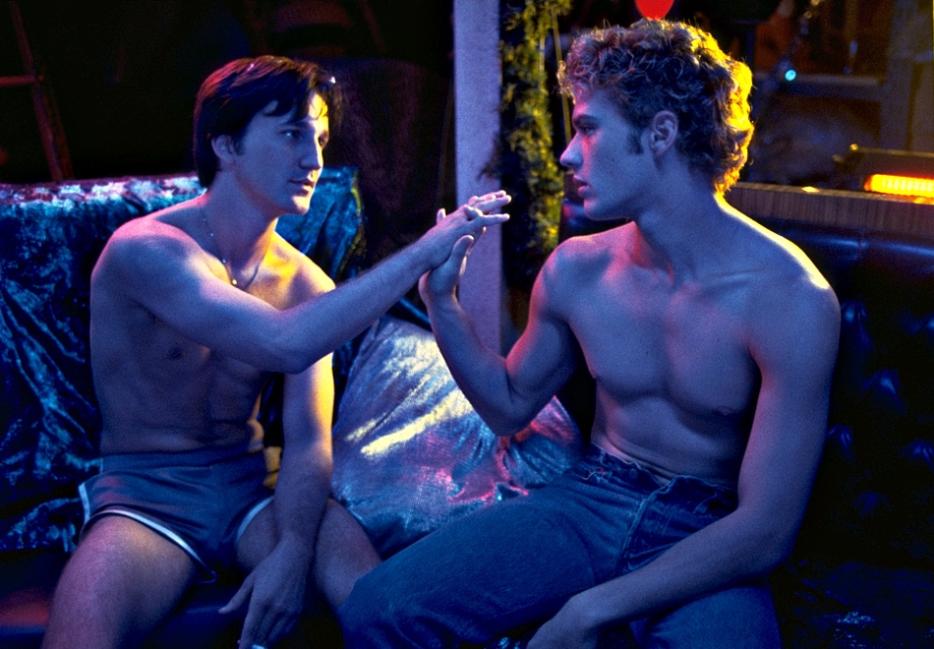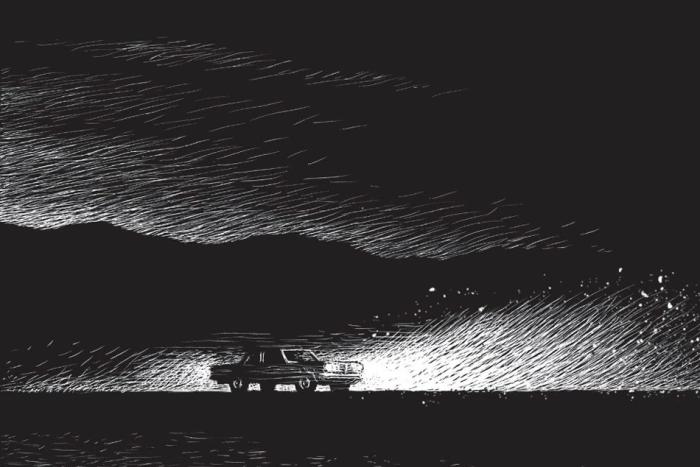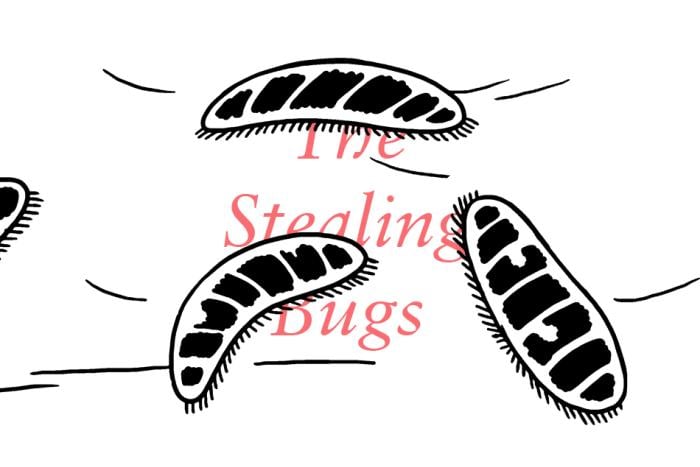On the last day of 1977, as New York City’s landlords were finding greater profit in torching certain neighbourhoods than owning them, Nile Rodgers and Bernard Edwards went to a party. Their group Chic had incarnated the disco phenomenon: “Dance, Dance, Dance,” with its counterpoint synth melody glistening distantly, had become their first pop hit earlier that summer. So naturally the pair headed to Studio 54, invited by that evening’s headliner, Grace Jones. The guard outside the stage door told them to fuck off. In his memoir Le Freak, Rodgers describes what happened next: “We downed a few bottles of vintage Dom Pérignon, and a little coke. I picked up my guitar, started jamming on a guitar riff and singing the words that the stage doorman had said to us … After playing and singing for a while, Bernard made it completely ours by adding, ‘Le freak, c’est chic,’ in place of ‘fuck Studio 54.’” Sashay into Studio, the final version of “Le Freak” facetiously suggested, and just claim your own dancefloor.
Rodgers made himself a habitué nonetheless: “Inside Studio there was a Dionysian sense of belonging and trust … Nothing was frowned upon.” The doormen outside spent most of their shifts glowering, because Studio 54 cultivated an aura of exclusive meritocracy. Money wouldn’t necessarily get you in, but looks, fame, or variety might. The trick was not being boring, which to the club’s overseers ruled out anyone conspicuously suburban, but they still kept coming from New Jersey and Long Island, happy to be the submissive parties in a sadomasochistic game of velvet ropes. Studio 54 was a former theater that never fully became anything else. As Tim Lawrence notes in Love Saves the Day, his history of ’70s dance culture, the resident DJ Richie Kaczor tended to play obvious hits. If you adored disco as music, you were probably spending more time at the Loft or the Paradise Garage. Why book Grace Jones just to sing when she could emerge from a giant serpent, too? Confetti fell so thickly the floor assumed a loose mosaic.
Near the start of Mark Christopher’s 1998 film 54, the main character, Shane—waved through the Studio rope for his abs alone—stands inside a puce antechamber, hesitant and awed. Playing this Jersey boy, Ryan Phillippe watches colored light fall across the screen of his body. Like no other film I remember, 54 shows the melancholy of a club where your joys and desires are all waiting on one more song, an absent friend, another drink, the next party. The director understands that disco itself was cinematic, each dance edit’s seamless cuts and segues demonstrating a kind of montage theory. A collective experience in the impersonal dark. Phillippe gapes at the polymorphous hedonists suckling and straddling—as Christopher tells it, one could scarcely get past the coat check at Studio before ending up in a bisexual threesome. Shane yearns for glamour, details unimportant, and follows it into the beds of women and men alike. He persuades the club’s goblin king Steve Rubell to give him a bartending gig, which comes with a uniform of iridescent satin shorts.
The open homoeroticism of 54 is still unusual. Disco movies have typically focused on the very last group to hear about it: straight white people. Saturday Night Fever invented Tony Manero’s macho freestyle strutting, along with much else (the source material by British journalist Nik Cohn was almost entirely fictional), and took care to subdue the theatrical Monti Rock as its DJ character. The 1978 flop Thank God It’s Friday passes a few hints—a man cuts in on Debra Winger and then flirts with her male partner instead—but is ultimately criminally dull for a movie featuring both Jeff Goldblum and Donna Summer. When 54 first came out in 1998, it got forced into that same template: The producer Harvey Weinstein saw the shifting lines of its central love triangle, the encyclopedic drug use, the general air of compulsive gasping decadence, and demanded cuts. “Initially we thought we were making something along the lines of Boogie Nights, you know?” Ryan Phillippe later said. “Something that was wild and represented the time period.”
As a recent Vulture article explained, Weinstein’s Miramax removed 40 minutes from 54 and then spliced in half an hour of reshoots, warping the film’s visual continuity. A tentative, searching kiss between Shane and his best friend Greg, played by Breckin Meyer, was out; the new cut bolted on a hetero romance with Neve Campbell’s soap-opera star Julie Black, originally no more than a fleeting presence. Weinstein’s 54 was a commercial failure anyway. If people remembered the movie at all, it was probably for recasting Gordon Lightfoot as a house diva. But Mark Christopher remained attached to the film, piecing together his own cut on his own time, which others circulated as a VHS bootleg. In 2014 Miramax granted a full restoration, allowing the 54 its director first envisioned to screen at festivals and now through digital HD. I saw it in Toronto last month. A few shots could only be rescued via low-quality video, their degraded grain mimicking ‘70s-vintage clips like “You Make Me Feel (Mighty Real),” as if scryed through a mirror ball.
If you adored disco as music, you were probably spending more time at the Loft or the Paradise Garage. Why book Grace Jones just to sing when she could emerge from a giant serpent, too? Confetti fell so thickly the floor assumed a loose mosaic.
The invocation of Boogie Nights, which begins at a disco, was apt. Like that film’s porn-star-turned-hustler Dirk Diggler, Shane seems innocently amoral even while robbing his own workplace. And 54 shares Paul Thomas Anderson’s fascination with dubious surrogate dads. As the Studio co-owner Steve Rubell, Mike Myers lets the most obnoxious quality of his comedy—that constant itch to ingratiate himself—sink into a genial leer. In one scene he crawls over a pile of money smiling forlornly at Greg, who wants very much to graduate from busboy to bartender but even more badly wants to get out of this room. “I’m not gay,” Greg tells his boss, who protests: “Labels!” With a stammer of a laugh, he adds: “I’m not gay either.” Rubell keeps a jar of quaaludes on his desk, like Ronald Reagan’s jellybeans, and has a similar disdain for income taxes. His rationale, not without its idealism, goes something like: Of course I skim off money, but who else puts it so beautifully on display? When FBI agents finally do raid the club, Myers sneers: “Even their suits look cheap.”
The director’s cut of 54 resembles a parable: The first and final shots are almost identical. Beyond that simple premise, Christopher’s film seldom devotes itself to narrative; instead we find ephemeral spectacle. Cherubs descend from the ceiling. Men painted gold sweat flecks onto each other. And with a few exceptions, the dialogue avoids conscious camp, what Sontag called “Being-as-Playing-a-Role.” (“I’ll never be a model,” Greg gripes, “I’m too short and I don’t suck cock.” Well, comes the reply, you can change one of those things…) After they bring him into their home, Shane takes up with Greg’s wife Anita (Salma Hayek), a coat check attendant at Studio 54 whose demo tape is always stashed nearby, and then tries to fix everything by seducing the other half of the couple. Sitting alone in the basement of the club, beneath indigo beams mantled with pink, Shane folds his hand against Greg’s. “Just because one loves blue,” the poet Maggie Nelson writes in Bluets, “does not mean that one wants to spend one’s life in a world made of it.”
Watching all this, I thought of Nancy Walker’s disastrous Village People vehicle Can’t Stop the Music—an attempt to consolidate their unlikely popularity amongst straight people. “You can’t spend $13 million making a minority movie,” producer Allan Carr rationalized. So Steve Gutenberg’s Jack Morell might talk about how excited he is to DJ at “Saddle Tramps” on Fire Island, but for the purposes of this movie, he remains conveniently asexual. But Can’t Stop the Music nonetheless fills the big “YMCA” number with elaborate curlicues of male nudity, and has the boys shoot a milkshake commercial where kids wear Tom of Finland outfits. There’s a horny-sidekick character handed such travesties as: “I go for exotic types, particularly when they’re half-naked.” Can’t Stop the Music also represents the only notable film role of Caitlyn Jenner, awkwardly cast as the uptight romantic lead: “Your Village friends are a little far out for me!” It’s weirdly poignant seeing her Republican square tear away inhibitions, perhaps the only element of the character that did not demand a doubled acting.
When Can’t Stop the Music came out in 1980, 15 New Yorkers had already died of a virus with no name, suffering from diseases whose presence could not be explained. Documenting gay life in the final moments before AIDS, the film is like 54’s climactic scene left permanently unresolved: a party about to seize up and halt under stark medicinal light. As Shane stumbles away from the club at the end of 54, clutching a trash bag for warmth, the director suggests that he, Greg and Anita might yet form a family, some three-sided shape. Like Gordon Lightfoot’s narrator, they will follow the poses on faded paperback covers, knowing now how many of those books have the same ending. The trio passes by a Village People poster: “READY FOR THE ‘80s!” Is it a promise, a command, a wink, an invitation, or a warning? If you could, if you could, if you could read my mind.






